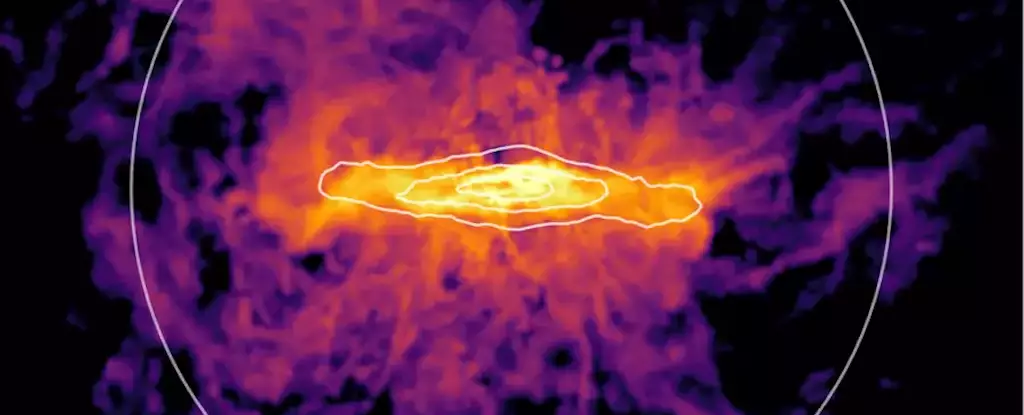Carl Sagan’s assertion that “we are made of star-stuff” evokes a sense of cosmic wonder. However, recent discoveries from the Hubble Space Telescope push this statement further, revealing an intricate journey that carbon — one of the key elements in our biological makeup — undertakes long before becoming part of us. New research has unveiled that some carbon atoms likely drifted through vast intergalactic distances, traveling hundreds of thousands of light-years before their eventual incorporation into the galaxies where they reside today.
Hubble’s data has illuminated an aspect of cosmic evolution that was previously opaque. It appears that carbon, like a seasoned traveler, can venture beyond the confines of its home galaxy into the dense gas clouds that populate the circumgalactic medium (CGM). This groundbreaking study emphasizes not only a new dimension to our understanding of carbon’s journey but also hints at the broader implications for galaxy evolution and the superstar lifecycle.
In the grand theater of the universe, heavier elements such as carbon are synthesized in the cores of stars. When these stars reach the end of their stellar journey, they explode in cataclysmic supernova events, ejecting their elemental cargo back into space. These elements then mix into the interstellar medium, where new stars and planetary systems form. However, this study paints a more complex picture: elements, particularly carbon, can take a prolonged detour, finding themselves in the CGM before ever returning to a galaxy’s formation processes.
Astronomer Jessica Werk from the University of Washington notes the remarkable implications of these findings, suggesting that the carbon present in our own biology has likely spent significant time far beyond our galaxy’s boundaries. Such a journey might be seen as both a literal and metaphorical molecular pilgrimage, symbolizing our profound connection to the cosmos.
To investigate this cosmic phenomenon, astronomers deployed the Cosmic Origins Spectrograph aboard the Hubble Space Telescope, utilizing light from nine distant quasars illuminating the CGM of 11 star-forming galaxies. This method allowed researchers to discern the unique spectral fingerprints of carbon, identifying its presence up to an astonishing 391,000 light-years away. To put this into perspective, this distance far exceeds the diameter of our own Milky Way galaxy, which measures approximately 100,000 light-years across.
Lead author Samantha Garza likens the CGM to a bustling transport hub, constantly facilitating the outbound and inbound movement of elements. This dynamic system illustrates how the universe recycles its components, reinforcing the perpetual cycle of stellar birth, death, and rebirth.
The findings reveal that star-forming galaxies engage in intensive carbon recycling compared to their more passive counterparts, challenging previous assumptions about the static nature of galactic material. In contrast, the CGM serves as a vast reservoir where essential elements reside before re-entering galaxies to nourish the next generation of stars and planets.
Interestingly, these results align with other observations regarding oxygen, highlighting that the CGM is not solely a storage space for carbon but a dynamic environment where multiple elements circulate. This intricate ballet of materials positions the CGM as a crucial player in the evolutionary narrative of galaxies.
Understanding these galactic processes is pressing, especially as the Milky Way also traverses its evolutionary timeline. As our galaxy continues to form new stars, a portion of the carbon and oxygen enveloping us has likely experienced its own odyssey through the cosmos. Grasping the dynamics of the CGM may unlock the secrets of when and how galaxies experience bursts of star formation, providing clearer insights into the lifecycle of galaxies — including the impending merger with the Andromeda galaxy.
As we delve deeper into the cosmic cycle of matter, Sagan’s profound insight resonates with new significance. The diverse elements that construct our very essence have not rested in solitude but have undertaken grand journeys across the universe. This realization invites us to embrace not only our connection to the stars but also the magnificent odyssey that every atom in our bodies has traveled through eons of cosmic history. It is a reminder that our existence is interwoven with the fabric of the universe, shaped by processes as ancient and vast as the cosmos itself.

